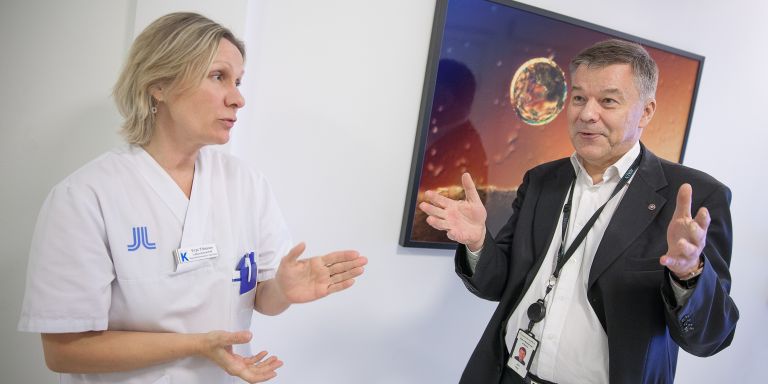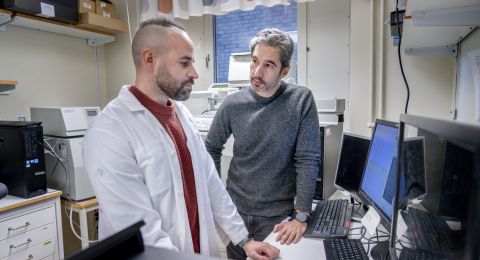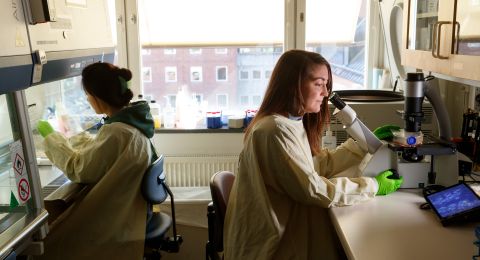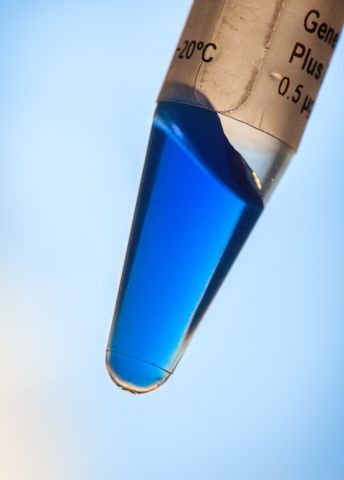
Project Grant 2015
Molecular mechanisms of early development
Principal investigator:
Juha Kere, Professor of Molecular Genetics
Co-investigators:
Fredrik Lanner
Karolinska University Hospital
Virpi Töhönen
Institution:
Karolinska Institutet
Grant in SEK:
SEK 17 million over five years
Gracing the walls of the waiting room at the IVF Clinic at Karolinska University Hospital in Huddinge, south of Stockholm are some of Lennart Nilsson’s fantastic pictures from his book A Child is Born. Each year the clinic performs about 1,100 in vitro fertilizations. Kere, a professor of molecular genetics, elaborates:
“But IVF does not work for everyone who seeks help for involuntary childlessness. The method is far from perfect, and needs to be developed.”
With support from the Knut and Alice Wallenberg Foundation, Professor Kere is coordinating a project mapping what happens at the molecular level during the first few days after the egg has been fertilized and the embryo begins to develop.
“We hope that this fundamental knowledge can be used to develop better treatments for infertility.”
In addition to Professor Kere’s own research team, the project includes two other teams, led by Virpi Töhönen, Senior Researcher at the IVF Clinic, and Fredrik Lanner, who researches in the field of cell biology. Another key figure in the collaboration is Professor Outi Hovatta, pioneer in the field of infertility and stem cell research.
First active genes
After fertilization the embryo passes from the fallopian tube to the womb. After 5-7 days, if all goes well, it lodges there, and implantation occurs. The placenta then begins to develop. Professor Kere explains:
“During the first few days cell division occurs about once every 24 hours. About 20 hours after fertilization the first cell splits into two. A day or so later the two divide into four, then eight, sixteen and so on and on until the baby is born. At that point there are billions of cells.”
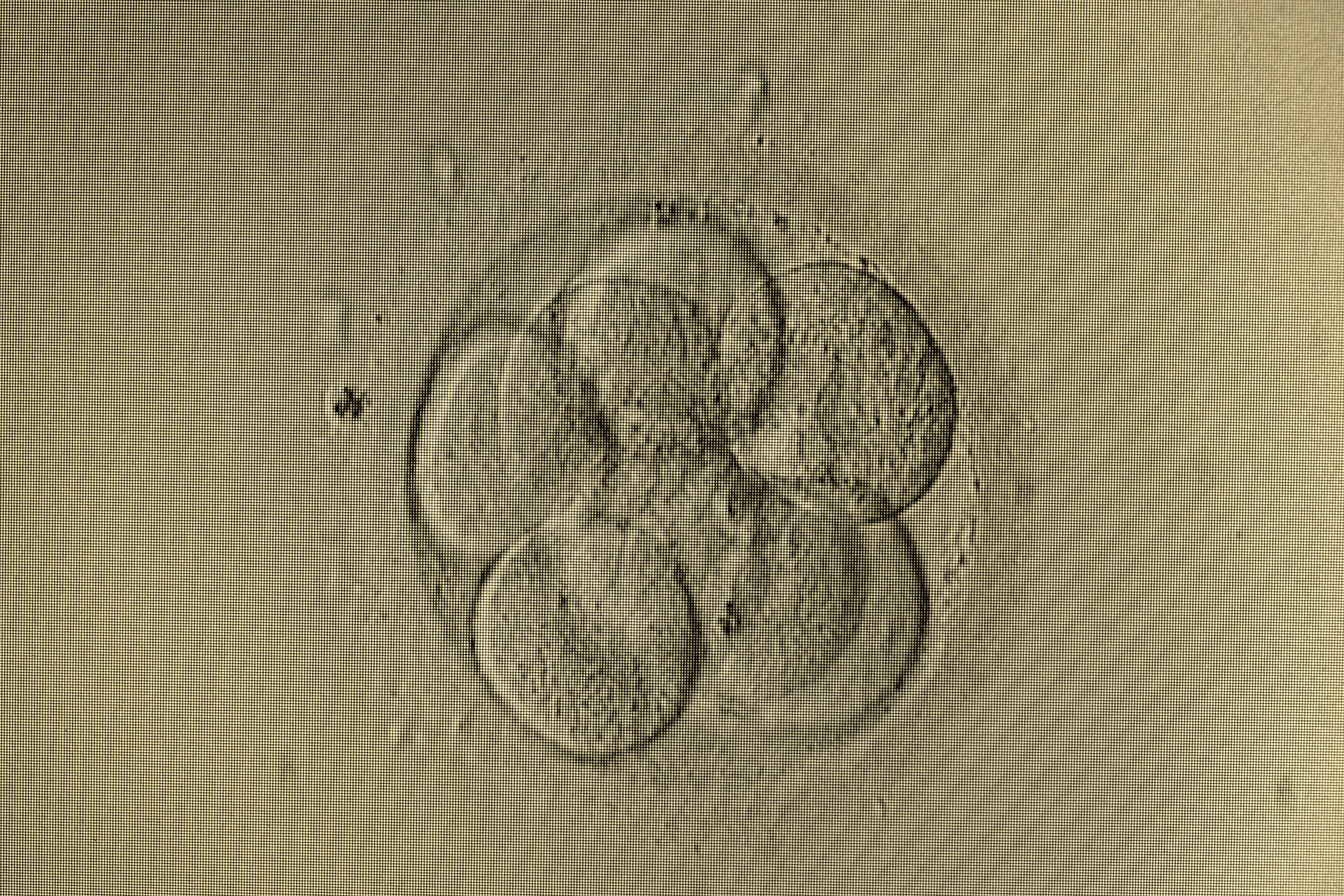
We have known for some time that we have 23,000 genes in our DNA, but we have not known the order in which the genes are switched on following fertilization. Professor Kere and his colleagues have found that 32 genes are active after two days, and 129 genes have been activated by day three. Their findings were published in Nature Communications in fall 2015.
“The findings were really exciting. We were the first to show which genes the embryo activates first. About half of them were known genes, but we also found seven previously unknown genes.”
Five of the seven “new” genes are not found in mice; some of them are only found in primates, i.e. apes and humans. This shows that early fetal development differs from one species to another, and that humankind’s early evolution cannot be understood by studying mice alone. Professor Kere elaborates:
“We have also been able to show that these new genes interact with ‘junk DNA’ in the cell, and that they are not expressed, or used, in life other than during this early phase. They are like an ignition key. We will now be studying this in greater depth. We want to describe what happens in the embryo during the first five days, and also during its implantation in the wall of the womb.”
Ethical considerations
The research involves use of embryonic stem cells from fertilized eggs, obtained from the IVF Clinic. Sweden allows IVF cells to be kept for five years. After that the law says they must be destroyed or used for a new attempt at IVF. A third option is to donate them for use in research.
“We only receive cells when the couple have given their written consent to donation for research purposes. These cells are valuable in many ways, and we therefore need to have good reasons for using them for research, and know what we are doing. First we learnt to remove and study embryonic cells from mice. It is vital to develop the methodology properly before moving on to larger animals or human embryos.”
Professor Kere, who is also a doctor, emphasizes the importance of always being mindful of medical ethics when conducting research of this kind.
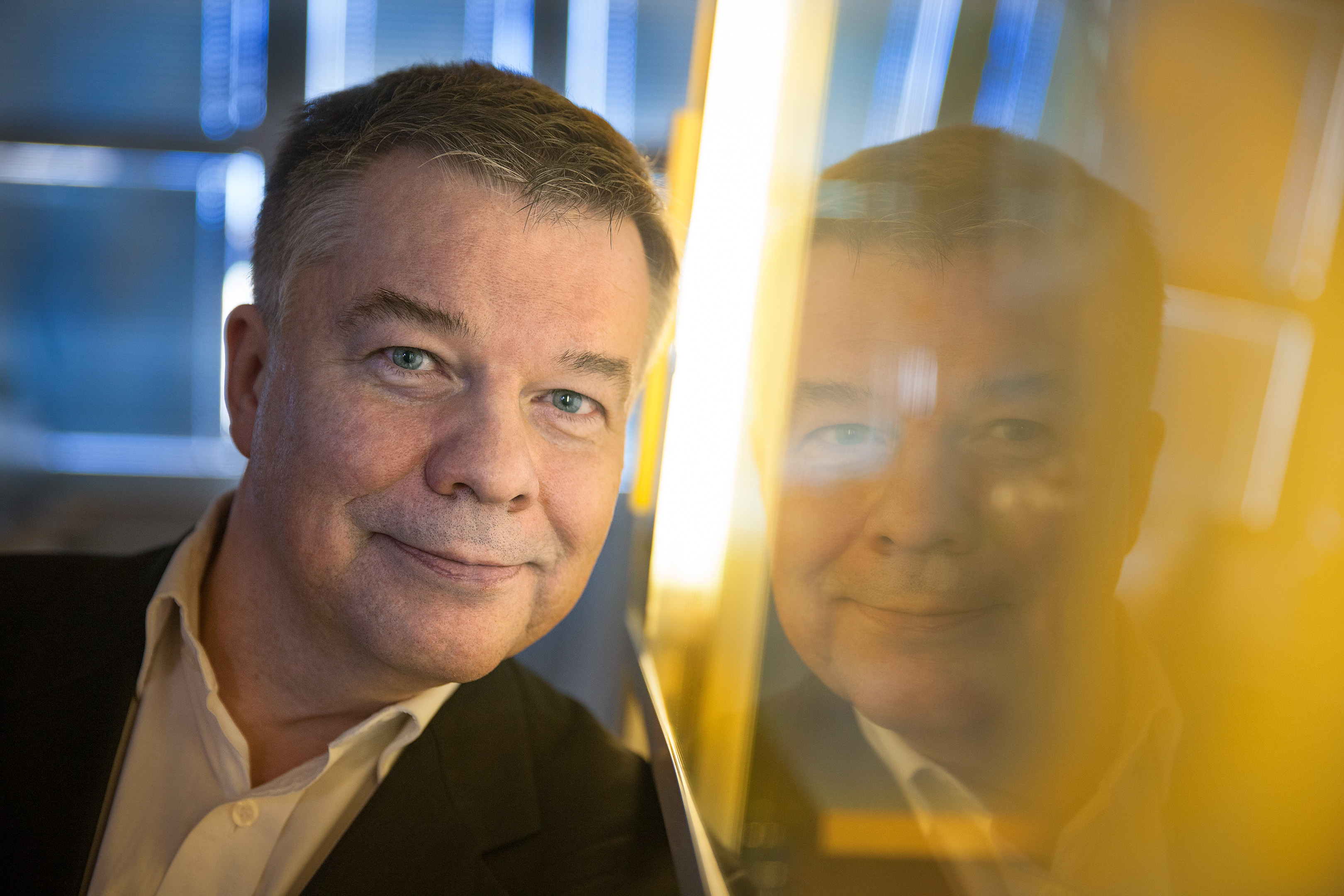
Sequencing RNA
It is now possible to study genes in the very earliest embryonic cells because the technology is now more sensitive. Professor Kere runs a video clip in which cells are removed from an embryo at the four-cell stage. First, a laser is used to make a hole in the protective layer of protein. The cells can then be extracted one at a time using a pipette.
“This is something we learnt to do long ago, but now we can also sequence RNA cell by cell using the method developed by Professor Sten Linnarsson at Karolinska Institutet. Sequencing is followed by the extensive work involved in interpreting all the data we obtain.”
Inside the IVF Clinic pictures of sperm along the walls show visitors which way to go. Professor Kere returns to the subject of values and the goal of his research.
“Scientifically speaking, we want to understand what happens during the very first days of life. Now we have methods to do so. It’s incredibly fascinating. But just as important when we start to understand this process is to identify key factors in diagnosing infertility. Perhaps in the future this will be a help in developing better treatments.”
Text Susanne Rosén
Translation Maxwell Arding
Photo Magnus Bergström
